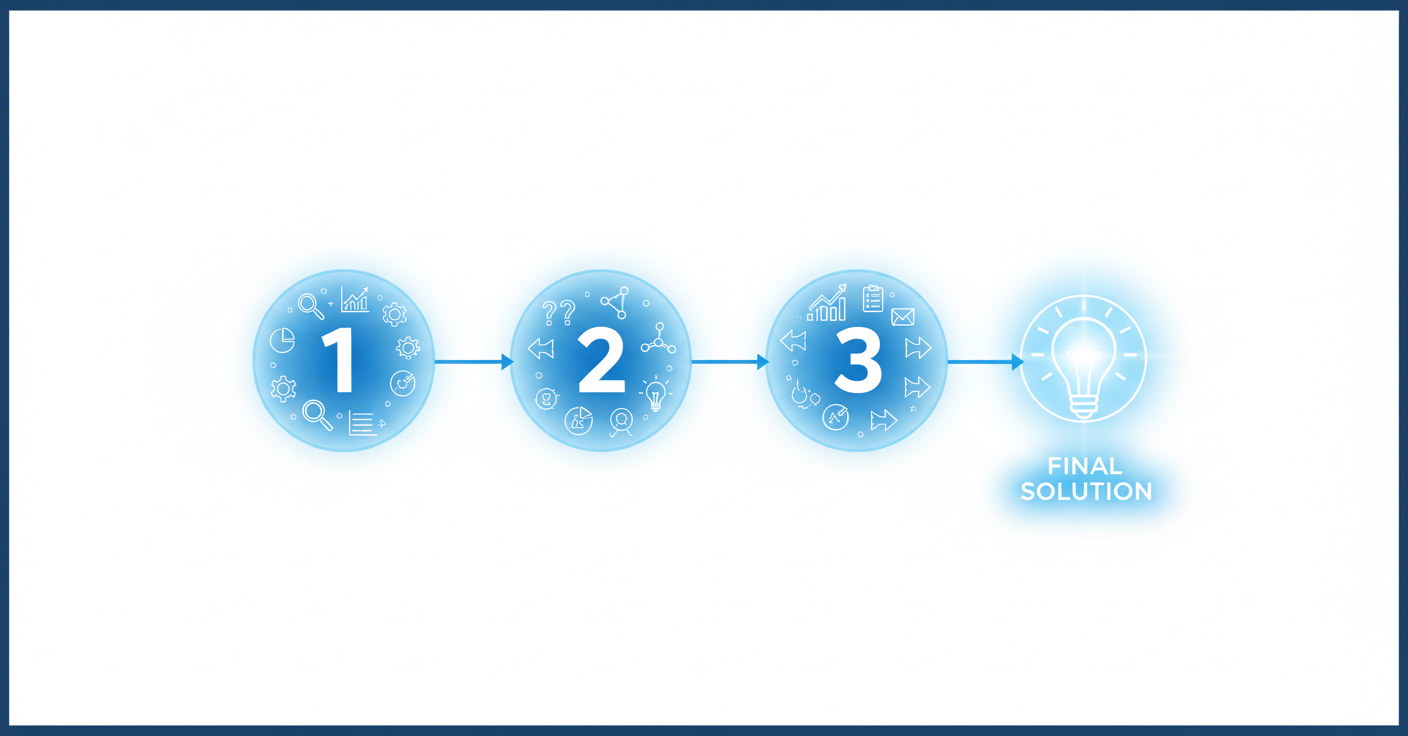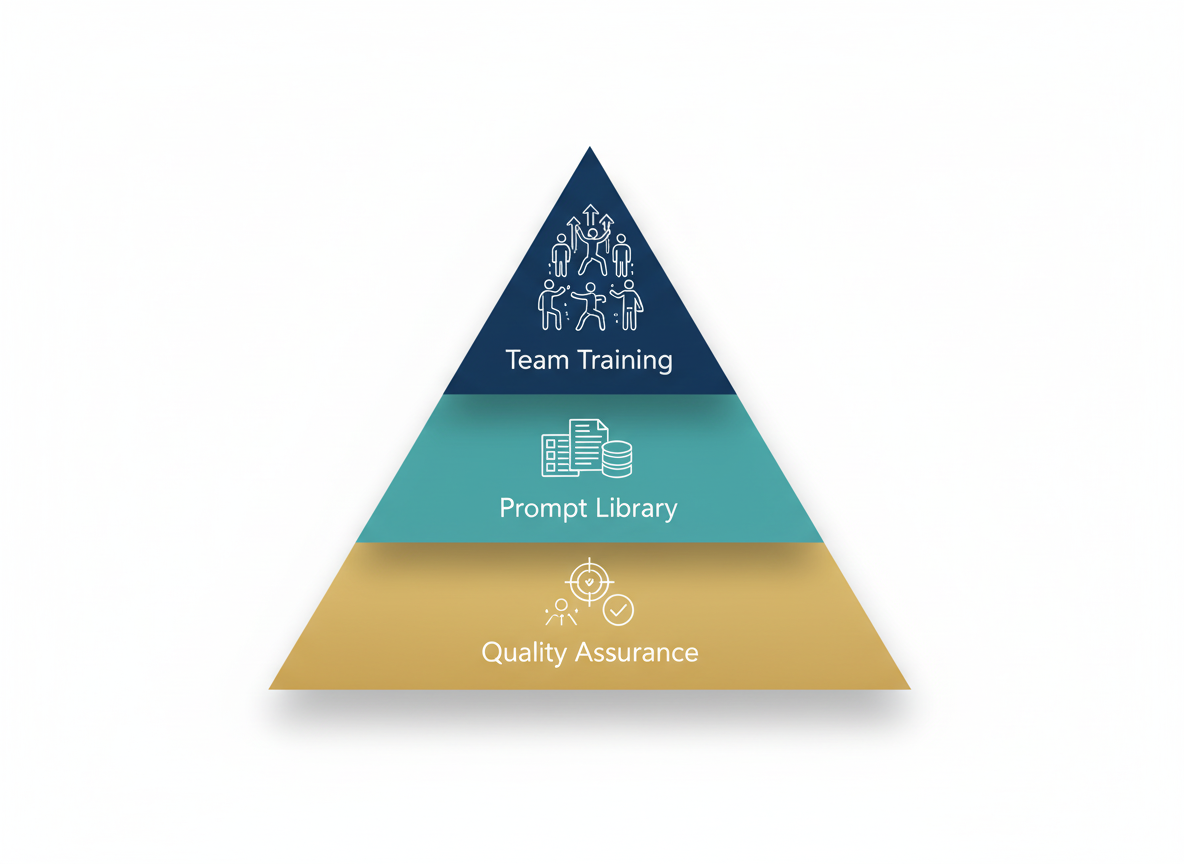The difference between mediocre and exceptional AI output often comes down to one thing: prompt quality. Research from AI interaction studies shows that well-structured prompts can improve AI response quality by 40-60% compared to basic requests.
Yet most teams struggle with inconsistent AI results, spending time on trial-and-error prompting instead of systematic prompt engineering.
Here’s the anatomy of prompts that consistently deliver high-quality AI outputs.
The Foundation: Understanding AI Prompt Processing
How AI Models Interpret Prompts
- Pattern Recognition: AI models identify patterns in your prompt structure and match them to successful interaction patterns from training data.
- Context Weighting: Different parts of your prompt receive different priority levels, with recent context and explicit instructions typically weighted higher.
- Instruction Hierarchy: AI models process explicit instructions, implied tasks, and contextual cues in specific orders that affect output quality.
- Token Efficiency: Well-structured prompts use AI processing capacity more efficiently, leading to more focused and relevant responses.
The Three Pillars of Effective Prompts
1. Structure: The Architecture of Instructions
Stanford AI Lab studies demonstrate that structured prompts with clear sections outperform unstructured requests by significant margins.
Essential Structural Components:
- Role Definition: Start prompts by establishing the AI’s role and expertise level.
- Example: “You are an experienced marketing strategist with expertise in B2B content creation.”
- Task Specification: Clearly define what you want the AI to accomplish.
- Example: “Create a blog post outline that addresses common objections to AI adoption in small businesses.”
- Output Format: Specify exactly how you want the response structured.
- Example: “Provide 5 main sections, each with 3 supporting points and suggested word counts.”
- Quality Criteria: Include standards for evaluation and refinement.
- Example: “Ensure each section addresses specific reader concerns and includes actionable advice.”
2. Context: The Information Environment
AI models perform better when context is provided in logical order from general to specific.
Background Information:
- Industry or domain specifics
- Target audience characteristics
- Brand voice and tone requirements
- Project constraints and objectives
Situational Context:
- Current market conditions
- Competitive landscape
- Previous content performance
- Campaign or project timeline
Reference Materials:
- Similar successful content examples
- Brand guidelines and style preferences
- Technical specifications or requirements
- Research data or supporting statistics
3. Clarity: Precision in Communication
Linguistic Research from computational linguistics shows that ambiguous language in prompts leads to significantly more variable AI outputs.
Clarity Best Practices
- Specific Language: Replace vague terms with precise descriptors.
- Instead of: “Make it engaging”
- Use: “Include 2-3 specific examples and end each section with an actionable tip”
- Measurable Outcomes: Define success criteria quantitatively when possible.
- Example: “Target 800-1200 words with subheadings every 200-300 words”
- Elimination of Ambiguity: Address potential interpretation variations.
- Example: “Focus on benefits for decision-makers, not technical implementation details”
Advanced Prompt Engineering Techniques

The Chain-of-Thought Method
- Research Background: Prompts requesting step-by-step reasoning significantly improve AI output quality for complex tasks.
- Implementation: Instead of asking for final outputs, request the AI to show its reasoning process.
- Example Structure: “Before creating the final content, first analyze:
1) Target audience pain points
2) Competitive messaging gaps
3) Brand positioning opportunities.
Then create content that addresses these insights.
Few-Shot Learning Integration
- Academic Research: MIT studies show that providing 2-3 high-quality examples dramatically improves AI output consistency.
- Application: Include examples of desired output style, format, or approach within your prompts.
- Template Structure: Here are examples of the writing style I want: [Example 1] [Example 2] Now create similar content for: [your specific request]
Iterative Refinement Prompting
Methodology: Break complex requests into iterative steps rather than expecting perfect results from single prompts.
Process:
- Initial Draft Prompt: Request basic structure and key points
- Refinement Prompt: “Expand section 2 with specific examples and data”
- Optimization Prompt: “Revise for conversational tone while maintaining professional credibility”
Industry-Specific Prompt Frameworks
Marketing Content Prompts
Framework Structure:
- Audience: Demographics, psychographics, and behavioral patterns
- Objective: Specific marketing goals and success metrics
- Channel: Platform-specific requirements and constraints
- Brand Voice: Tone, style, and messaging guidelines
- Call-to-Action: Desired reader behavior and conversion goals
Technical Documentation Prompts
Essential Elements:
- User Skill Level: Beginner, intermediate, or advanced technical knowledge
- Use Case: Specific scenarios and implementation contexts
- Format Requirements: Documentation standards and visual elements
- Completeness Criteria: Step-by-step detail level and troubleshooting coverage
Creative Content Prompts
Key Components:
- Creative Brief: Project objectives and creative constraints
- Style References: Visual or written style examples and inspiration
- Brand Guidelines: Logo usage, color schemes, and design standards
- Audience Engagement: Emotional response goals and interaction objectives
How Qolaba Optimizes Prompt Engineering
Multi-Model Prompt Testing
Qolaba’s unified platform enables prompt testing across different AI models to identify which models respond best to specific prompt structures and content types.
Optimization Benefits:
- Comparative Analysis: Test identical prompts across multiple AI models
- Model-Specific Adaptation: Optimize prompts for different AI architectures
- Quality Benchmarking: Identify consistently high-performing prompt patterns
- Efficiency Optimization: Route prompts to models that excel at specific task types
Team Prompt Libraries
Collaborative Prompt Development:
- Shared Templates: Teams can develop and share effective prompt structures
- Version Control: Track prompt iterations and performance improvements
- Best Practice Documentation: Capture successful prompt patterns for organizational learning
- Role-Based Access: Different team members can access relevant prompt libraries
Analytics-Driven Prompt Optimization
Performance Tracking:
- Output Quality Measurement: Track success rates and refinement requirements
- Efficiency Metrics: Monitor time-to-satisfactory-result across different prompt approaches
- Team Adoption: Identify most-used and most-successful prompt patterns
- Continuous Improvement: Data-driven insights for prompt template optimization
Common Prompt Engineering Mistakes
Over-Specification Problems
- Issue: Excessively detailed prompts can constrain AI creativity and lead to rigid, formulaic outputs.
- Solution: Balance structure with creative freedom by specifying outcomes rather than exact processes.
Context Overload
- Problem: Including too much background information can dilute focus and reduce output relevance.
- Approach: Prioritize context that directly impacts the desired output quality and relevance.
Assumption Errors
- Challenge: Assuming AI understands implied context or industry-specific knowledge without explicit explanation.
- Resolution: Include necessary background information and define specialized terms or concepts.
Building Organizational Prompt Excellence

Team Training and Development
Skill Building Areas:
- Prompt Structure Mastery: Training on effective prompt architecture
- Context Engineering: Understanding how to provide relevant background information
- Output Optimization: Techniques for refining and improving AI-generated content
- Quality Assessment: Criteria for evaluating and improving prompt effectiveness
Prompt Library Development
Organizational Assets:
- Template Collections: Proven prompt structures for common business tasks
- Industry Adaptations: Customized prompts for specific business contexts
- Performance Documentation: Records of successful prompt patterns and outcomes
- Continuous Refinement: Regular updates based on usage data and results
Quality Assurance Systems
Process Implementation:
- Prompt Review Procedures: Standards for evaluating prompt quality before deployment
- Output Validation: Systematic approaches to assessing AI-generated content
- Feedback Integration: Mechanisms for incorporating results into prompt improvement
- Team Collaboration: Shared learning and prompt optimization across team members
Measuring Prompt Performance
Success Metrics
Quantitative Measures:
- First-Attempt Success Rate: Percentage of prompts producing satisfactory results without revision
- Revision Cycles: Average number of iterations required to achieve desired outcomes
- Time Efficiency: Reduction in total time from prompt to final output
- Output Consistency: Reliability of similar prompts producing similar quality results
Qualitative Assessment:
- Content Relevance: Alignment with specified objectives and audience needs
- Creative Quality: Innovation and engagement level of AI-generated content
- Brand Consistency: Adherence to organizational voice and messaging standards
- Technical Accuracy: Correctness and completeness of specialized information
The Strategic Advantage of Prompt Excellence
Organizations that invest in systematic prompt engineering gain competitive advantages through:
- Productivity Multiplication: Consistent, high-quality AI outputs reduce revision cycles and accelerate content creation.
- Quality Standardization: Repeatable prompt structures ensure consistent output quality across team members and projects.
- Skill Democratization: Effective prompt templates enable less experienced team members to achieve professional-quality AI interactions.
- Innovation Acceleration: Superior prompt engineering unlocks more creative and sophisticated AI capabilities for competitive differentiation.
Transform AI interactions from trial-and-error to systematic excellence through proven prompt engineering techniques with Qolaba today!





